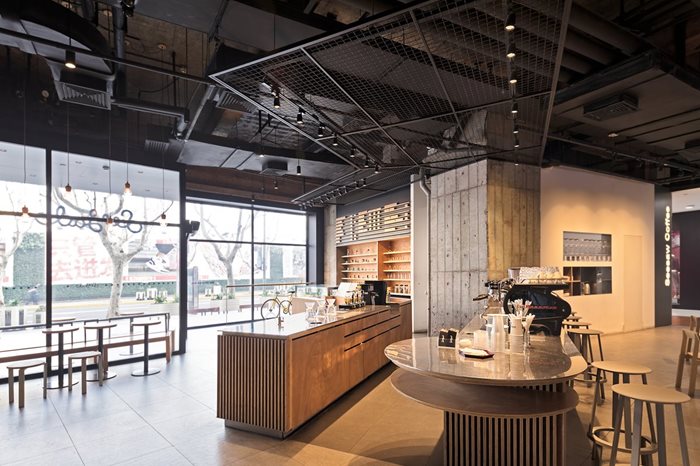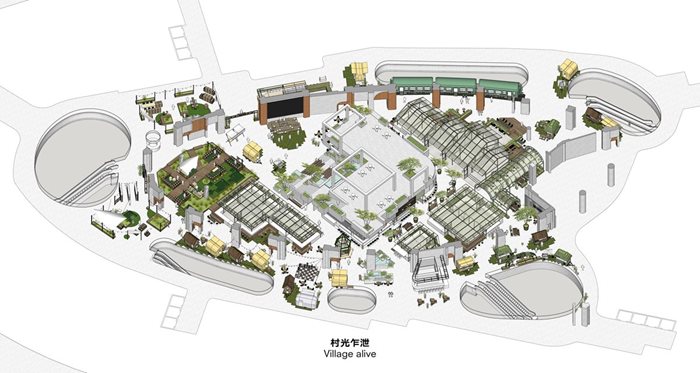From promoting wellbeing to decreasing stress and enhancing productivity, there is a cornucopia of reasons why biophilic design is on the ascendance worldwide. In the first of two articles on the topic, 5THWAVE unpacks what biophilia is, and how these design principles can be applied to hospitality spaces
.jpg.aspx?lang=en-GB&width=700&height=525)
Devoción Flat Iron District , New York, USA Photo credit: Courtesy of Devoción
The restorative effects of immersion in nature are well documented. Studies have found that plants and trees release airborne chemicals called phytoncides which possess immune system-boosting antibacterial and antifungal qualities.
In Japan, the practice of shinrin-yoku or ‘forest bathing’ was developed in the 1980s after studies found walking in wooded areas could reduce blood pressure, lower cortisol levels, and improve memory and cognition.
Across Sweden, Denmark and Norway, friluftsliv (free-loofts-liv), or ‘open-air living’, is an important part of the regional culture and promotes wellbeing through walks and short stays in the natural world.
These practices are testament that the urban jungles of our own making often pit people against nature, with poor air quality, artificial lighting and noise all proving detrimental to our physical and mental health. All of which have ramifications for the design of hospitality spaces.
"We find ourselves in busy, noisy, urban geometric spaces that are devoid of nature"
– Oliver Heath, Founder, Oliver Heath Design
This reality becomes more problematic given that 66% of the world’s population is projected to live in cities by 2050. In the US, the average person spends 93% of their time indoors according to the Environmental Protection Agency. Around the world, workers spend around one third of each day in offices.
As a counter to our growing malaise with the built environment, Biophilia – the concept that humans have an innate tendency to seek connections with nature – is making waves around the world as an alternative design approach to detoxifying urban and interior spaces.
The term, which translates as ‘the love of living things’ in ancient Greek, was coined by German-born American psychoanalyst Erich Fromm in his 1973 essay The Anatomy of Human Destructiveness (1973), which described the concept of biophilia as “the passionate love of life and of all that is alive”.
It was later used by American biologist Edward O. Wilson in his work Biophilia (1984), which proposed that the tendency of humans to focus on and to affiliate with nature and other life-forms has, in part, a genetic basis.
In practice, biophilic design seeks to re-establish our innate connection with the natural world and can have a profound positive change in the way we live, work, and enjoy leisure destinations.
For hospitality businesses, whose raison d’être is to provide relaxing and comforting environments, biophilic and human-centric design presents the opportunity to enhance customer wellbeing, increase dwell time and staff productivity while building unique, eye-catching brand identities.
 Seesaw 755, Shanghai | Photo credit: Courtesy of Nota Architects
Seesaw 755, Shanghai | Photo credit: Courtesy of Nota Architects
“We know that being in and around nature makes us feel good,” says Oliver Heath, a global expert on biophilic and sustainable design and founder of Oliver Heath Design. “If I ask you to picture a space in your mind where you feel most happy, calm and relaxed, the chances are that the space that you’re thinking of is a space surrounded by nature,” he adds.
Biophilia is the central tenet of Heath’s design work, with his practice having delivered projects for prominent clients including the BBC and the Crick Institute, as well as a range of restaurants, cafés, offices and residences. As Heath points out, the built environments we live and work in are often lightyears from the idyllic vistas of our imaginations.
“We’ve spent hundreds of thousands of years existing in healthy forms of nature, so we quite literally have a genetic inheritance that allows us to appreciate spaces we know can support life. Fast forward to the present and we find ourselves in busy, noisy, urban geometric spaces that are devoid of nature. It’s no wonder that we feel sick, stressed, exhausted and burnt out,” says Heath.
How are biophilic hospitality spaces designed?
Biophilic design is much more than simply incorporating plants into buildings. Natural light and materials, ventilation, and clear, uncluttered layouts to promote human interaction are vital components. Fluid motion such as leaves swaying in the breeze or ripples moving across water can also have a positive impact on our cognitive focus.
"We wanted to let baristas be the superstars of the space"
– Shiyun Qian, Founder, Nota Architects
These elements feature heavily in the design work of Shanghai-based
Nota Architects, founded by architect and designer Shiyun Qian in 2007.
A long-time proponent of biophilic design principles, the practice has built an eclectic portfolio of hospitality venues, including coffee shops, restaurants and hotels. Notably, it has designed boutique stores for Chinese specialty coffee chain Seesaw and tea concept Heytea.
“Because the average coffee shop is small, perhaps just 100 square metres, it is very important to get the back of house service right,” says Shiyun.
“We start by figuring out how the circulation would work in the kitchen and work our way out to the front of the store. Fluidity is crucial for a clear layout – once the back of house planning is solved then most other parts of the store design fall into place,” she adds.
When Nota first began designing coffee shops in 2014, the concept of coffee shop culture and interacting with baristas was less familiar in the Chinese market. This dynamic presented an opportunity for Nota to design spaces with clear lines of communication at their core.
 Design concept of Foodie Social in Xintiandi Mall, Shanghai, China | Photo credits: Nota Architects
Design concept of Foodie Social in Xintiandi Mall, Shanghai, China | Photo credits: Nota Architects
“Coffee shops should have connection to the community,” Shiyun says. “To create more conversations and interactions in our spaces we used an island form for the coffee bars. We wanted to let baristas be the superstars of the space because at the time many people didn’t understand the difference between baristas and restaurant servers. These bars helped showcase barista skills and the highend equipment they use.”
While tech giants with huge resources at their disposal, such as Apple and Google, have already incorporated biophilic design into their headquarter buildings, the concept is gathering pace in the mainstream. According to Shiyun, biophilic design needn’t be prohibitively expensive and is achievable on a range of scales.
“Most of our designs were not that costly because we were not using expensive materials,” she says. “Most of the cost lies in the manufacturing and construction process, and of course there is a maintenance cost, particularly when looking after plants – but all buildings carry maintenance costs.”
In part two we’ll examine how this human-centric design philosophy is producing some of world’s most attractive hospitality spaces and the business benefits biophilia can bring.
This article was first published in Issue 9 of 5THWAVE magazine.
Subscribe to 5THWAVE to receive each edition in print and digitally or sign up to our newsletter and be the first to read the latest articles and updates on World Coffee Portal research
